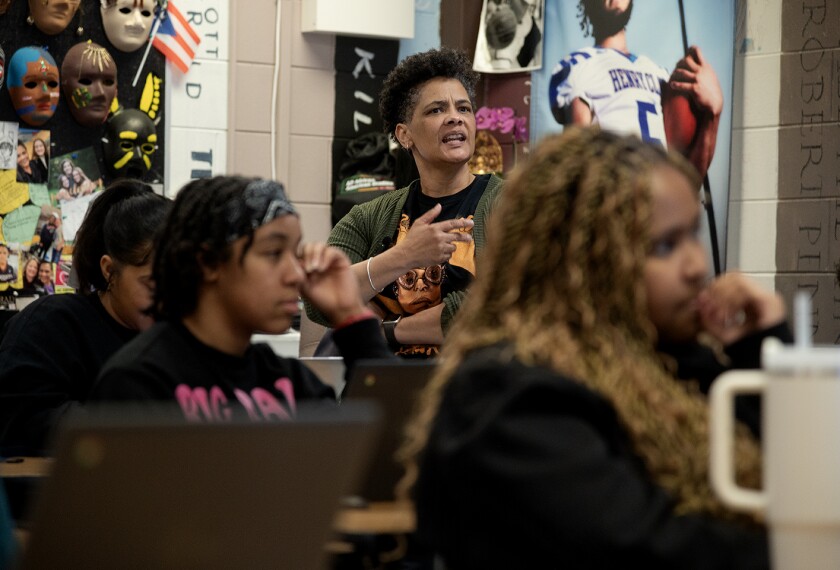The middle-level curriculum has been under increasing scrutiny in this era of standards and high-stakes testing as advocates and critics debate whether middle schools can adequately address the academic and emotional needs of early adolescents.
More than 5,600 teachers, principals, district leaders, and academics gathered here Nov. 1-3 at the annual conference of the National Middle School Association to discuss the obstacles to implementing the middle school philosophy.
One hundred of the more than 500 workshops and seminars dealt with challenging and relevant curricula.
“Can the curriculum be rigorous and relevant?” James A. Beane, a professor of education at National-Louis University in Evanston, Ill., asked in his “Hot Topic” session. Mr. Beane, who sounded a rallying cry for more rigor, focus, and meaning in the middle-grades curriculum in his 1993 book, A Middle School Curriculum: From Rhetoric to Reality, argued that the academic-standards movement and the high-stakes tests used in many places to gauge student progress toward meeting standards have undermined the best efforts of middle-level educators.
The standards, he said, have too often met the literal definition of rigorous, “meaning harsh or tyrannical.” But the desire to make the curriculum relevant to young adolescents, he added, has sometimes had the opposite effect, leading to activities and projects that engage students but are not particularly demanding or meaningful.
“Curriculum that is intellectually rigorous provides depth and care. It does not have to be overly difficult or painful or esoteric,” Mr. Beane said. “But it does not have to be fun either.”
The middle school concept envisioned instruction based on subject matter connected across disciplines by central themes or questions about students’ lives and the world around them, often generated or constructed by students themselves.
Critics have argued that what has emerged instead over the past four decades is a curriculum that is shallow, fragmented, and unchallenging. (“Middle Grades: Feeling the Squeeze,” Special Report, Oct. 4, 2000.)
Mr. Beane suggested that the middle school vision can form the basis of a standards-based course of study.
“Curriculum cannot be rigorous unless it is relevant,” he said.
But crafting such a curriculum in a standards environment is more likely in some states than others, he said. “The excellent examples of relevant curricula are possible in states where standards are broad and flexible and manageable in number,” he said, citing Vermont as such a state. “There is the temptation in other states to race over and memorize the material.”
Mr. Beane said California and Massachusetts are among those states that have content-laden standards that leave little time for innovation in instruction.
The 28-year-old association’s membership is at an all-time high of more than 30,000. Subscriptions to the NMSA publications, Middle School Journal and Middle Ground, are also thriving, according to association officials.
But educators’ anxiety over the Sept. 11 terrorist attacks, and the restrictions many school districts are now placing on travel, meant a much smaller group here than in the past. Although more than 5,000 middle school teachers, principals, and district leaders traveled to the nation’s capital for the annual conference, the crowd was a little more than half the number expected.
With registration continuing into October, NMSA officials anticipated that many educators were delaying their decisions to attend while the war against terrorism unfolded. But when the FBI issued a second alert Oct. 29, warning that more terrorist attacks could be imminent, many potential participants and presenters canceled their plans.
“People are concerned, and I can understand why they couldn’t come,” said NMSA Executive Director Sue Swaim. “This has nothing to do with a decline in interest in middle-level education. A lot of people decided to come anyway because it’s an important opportunity to network and learn.”
—Kathleen Kennedy Manzo




